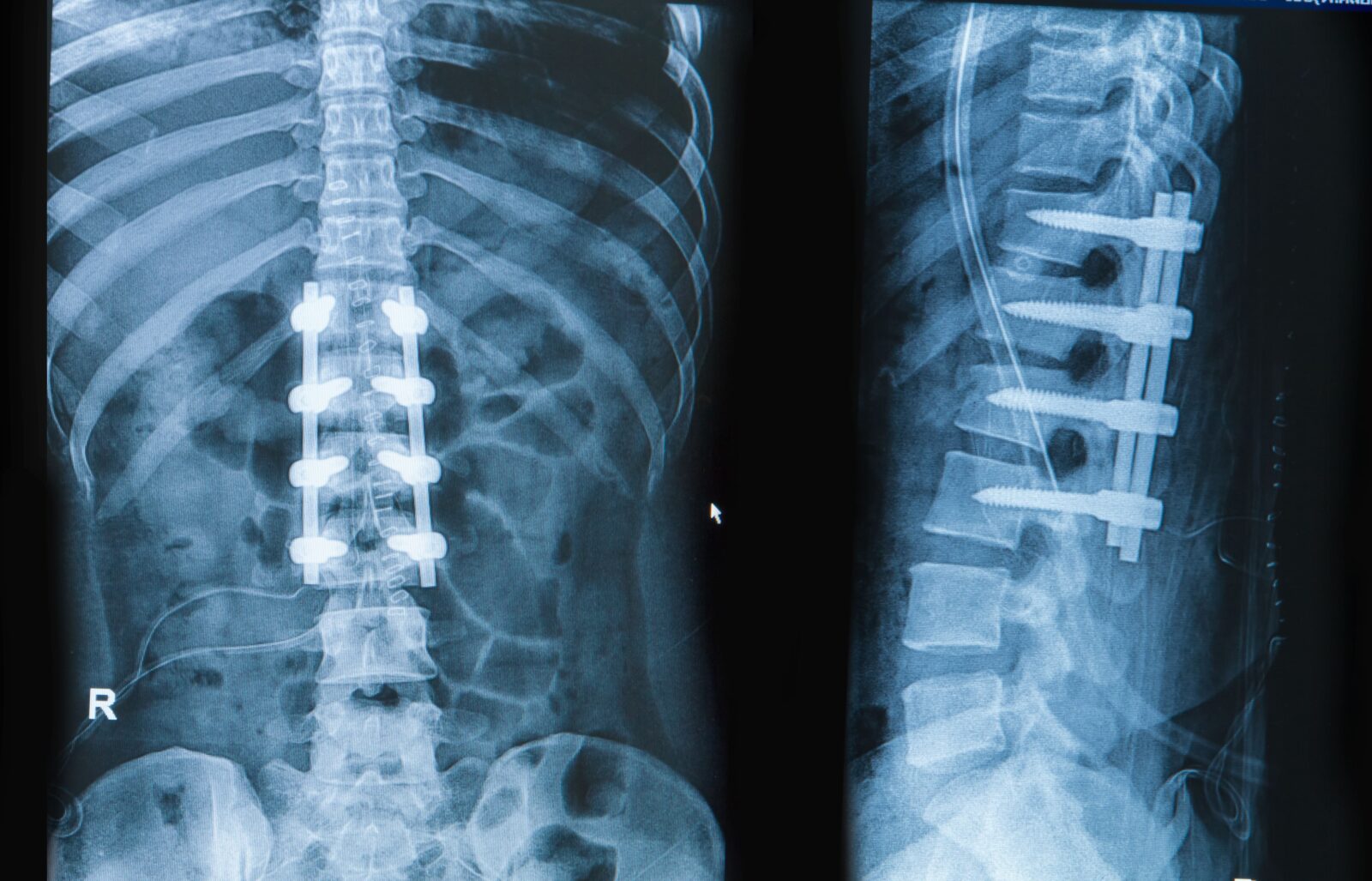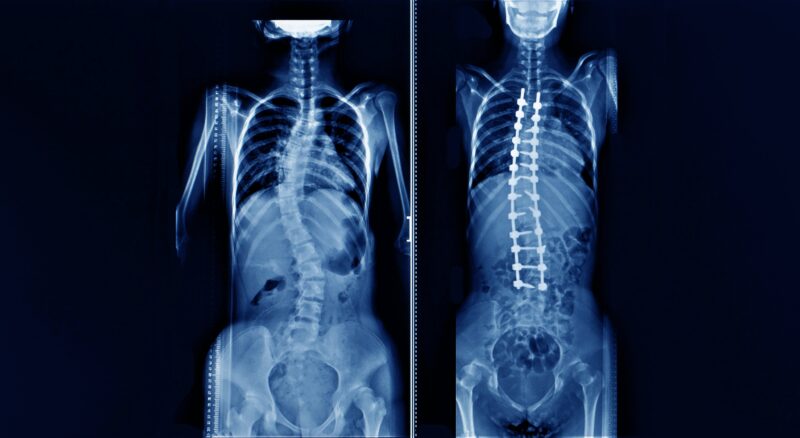Adjacent Segment Disease (ASD) is a term that has gained prominence in the field of spine health and surgery. But what exactly is it, and why is it important to understand? In this blog post, we’ll delve deep into the intricacies of ASD, shedding light on its causes, symptoms, and the available treatment options.
What is Adjacent Segment Disease?
Adjacent Segment Disease refers to the degenerative changes that occur in the vertebrae and intervertebral discs directly above or below a spinal segment that has previously undergone surgery, specifically fusion surgery. In simpler terms, when a section of the spine is fused during surgery, the segments adjacent to that fused section may experience increased stress and pressure. Over time, this can lead to degenerative changes in those adjacent segments.
Here are the types of degenerative changes that can happen as a result of ASD:
Disc Degeneration:
- Disc Desiccation: The intervertebral discs lose hydration, leading to a reduction in disc height and flexibility.
- Disc Herniation: The inner gel-like nucleus pulposus can protrude through the outer fibrous ring (annulus fibrosus), leading to a disc bulge or herniation. This can compress nearby nerve roots, causing pain and neurological symptoms.
- Annular Tears: Small tears can develop in the annulus fibrosus, which can be a source of pain and can also predispose the disc to herniation.
Facet Joint Arthritis:

- The facet joints, which are small stabilizing joints located between and behind adjacent vertebrae, can undergo degenerative changes. This can lead to the development of osteoarthritis in these joints, causing pain and stiffness.
- Bone Spurs (Osteophytes): As a response to increased stress and instability, the body may produce extra bone growths known as bone spurs. These can impinge on nerve roots or the spinal cord, leading to neurological symptoms.
Ligamentous Changes:
- Ligamentum Flavum Hypertrophy: The ligamentum flavum, which runs within the vertebral canal, can thicken due to increased stress. This thickening can narrow the spinal canal, a condition known as spinal stenosis.
- Instability: The ligaments that stabilize the spine can become lax or stretched, leading to increased motion between the vertebrae. This can cause pain and further degenerative changes.
Vertebral Changes:
- Spondylolisthesis: This is a condition where one vertebra slips forward over the one below it. It can be due to degenerative changes in the facet joints and ligaments, leading to instability.
- Vertebral Compression Fractures: Increased stress on the vertebrae can make them more susceptible to fractures, especially in individuals with weakened bone density.
Narrowing of the Spinal Canal (Spinal Stenosis):
- Due to a combination of disc degeneration, facet joint arthritis, ligamentum flavum hypertrophy, and bone spur formation, the spinal canal can become narrowed. This can compress the spinal cord or nerve roots, leading to symptoms like pain, numbness, and weakness.
Neurological Changes:
- The degenerative changes associated with ASD can compress the nerve roots or the spinal cord. This can lead to radiculopathy (nerve root compression symptoms) or myelopathy (spinal cord compression symptoms).
It’s essential to understand that while ASD can accelerate these degenerative changes, some of them can also occur as a natural part of the aging process. However, the presence of ASD can exacerbate the severity and progression of these changes, leading to more pronounced symptoms and complications. Regular monitoring and early intervention can help manage these degenerative changes effectively.
Causes of Adjacent Segment Disease
The exact cause of ASD is multifactorial, but several factors contribute to its development:
Biomechanical Changes:
When a spinal segment is fused, it no longer has the flexibility it once had. This means that the segments adjacent to the fused area have to compensate for this loss of movement, leading to increased mechanical stress and strain on those segments.
Natural Aging Process:
Degenerative changes in the spine are a natural part of aging. However, when a segment of the spine is fused, the natural degenerative process can be accelerated in the adjacent segments due to the increased stress.
Surgical Factors:
The technique and approach used during the fusion surgery can also play a role. For instance, if too much bone or disc material is removed during the procedure, it can alter the biomechanics of the adjacent segments.
Pre-existing Conditions:
If the patient already had mild degenerative changes in the adjacent segments before the surgery, the chances of developing ASD post-surgery are higher.
Symptoms of Adjacent Segment Disease
The symptoms of ASD can vary depending on the location and severity of the degeneration. Common symptoms include:
- Pain: This is the most common symptom and can be localized to the back or neck, depending on the location of the ASD. The pain can also radiate to the arms or legs.
- Stiffness: Patients may feel stiffness in the back or neck, especially after waking up in the morning or after prolonged periods of inactivity.
- Numbness or Tingling: If the degenerative changes are pressing on a nerve, it can lead to numbness, tingling, or even weakness in the arms or legs.
- Decreased Range of Motion: The affected area of the spine may have a reduced range of motion due to pain and stiffness.
Diagnosis of Adjacent Segment Disease

If a patient presents with the above symptoms and has a history of spinal fusion surgery, the physician will suspect ASD. Diagnostic tools include:
- X-rays: These can show changes in the alignment of the spine and narrowing of the disc space in the adjacent segments.
- MRI: This provides a detailed view of the soft tissues, including the intervertebral discs and nerves. It can show disc degeneration, herniation, or nerve compression.
- CT Scan: This can provide detailed images of the bony structures of the spine and can show arthritic changes or bone spurs.
Treatment Options for Adjacent Segment Disease
Treatment for ASD is tailored to the individual patient and the severity of their symptoms:
Conservative Treatment:
This includes physical therapy, pain medications, and lifestyle modifications. Physical therapy can strengthen the muscles supporting the spine, reducing the stress on the affected segments.
Epidural Injections:
These can provide temporary relief from pain by delivering steroids directly to the affected area, reducing inflammation.
Surgery:
If conservative treatments fail, surgery may be considered. This could involve decompression surgery to relieve pressure on the nerves or additional fusion surgery to stabilize the affected segments.
In Conclusion
Adjacent Segment Disease is a potential complication following spinal fusion surgery. While it doesn’t occur in every patient, it’s essential to be aware of the possibility and the symptoms. Regular follow-ups with a spine specialist after surgery and early intervention if symptoms arise can help manage and treat ASD effectively. As with any medical condition, early diagnosis and treatment are key to achieving the best outcomes.










